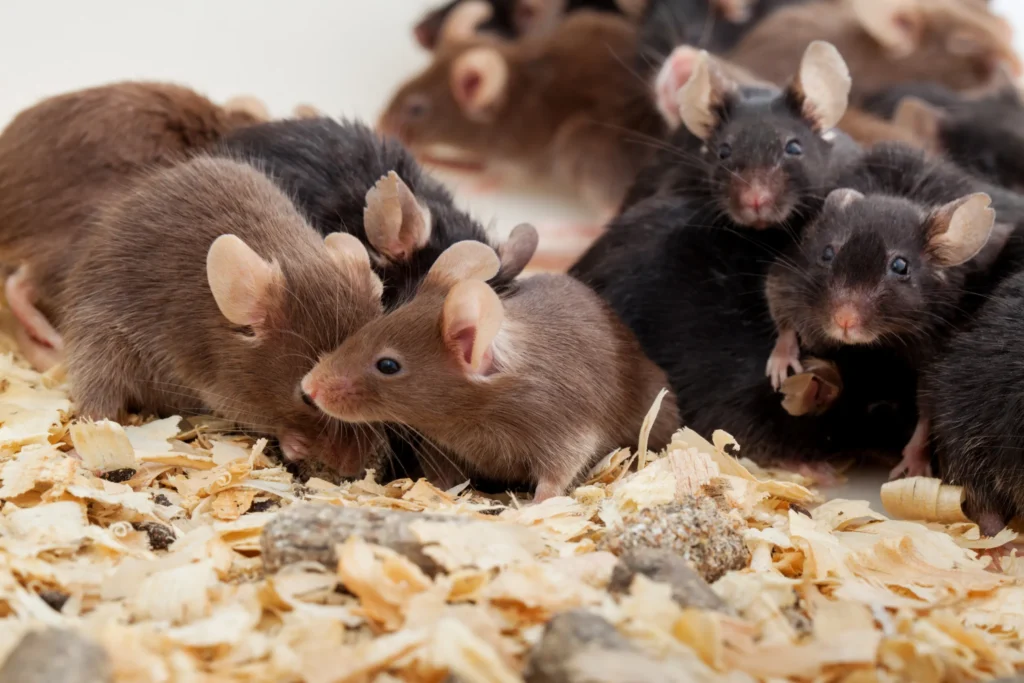
Mouse infestations are a common problem in many American homes, posing serious health risks and causing significant property damage. This guide explores everything you need to know about pest control for mice, from understanding the problem to finding the best solutions.
Table of Contents
Understanding Mice as Pests in American Homes
Why Mice Infest Homes
Mice are small, nocturnal creatures that seek food, shelter, and warmth, making human homes an attractive option. They can enter through tiny cracks and holes, quickly establishing nests in walls, attics, and basements. The primary reasons mice infest homes include:
- Food Availability: Mice are opportunistic feeders and will consume almost anything. Homes with accessible food sources, such as uncovered garbage, crumbs, and pet food, are particularly vulnerable.
- Shelter: Mice prefer warm, hidden places to build their nests. Cluttered areas, stored boxes, and even household appliances can provide ideal nesting sites.
- Breeding: Mice reproduce rapidly. A single female mouse can produce up to 10 litters a year, with each litter containing 5-8 young mice. This rapid reproduction rate can lead to a severe infestation if not addressed promptly.
The Impact of Mice Infestations on Health and Property
Mice pose several health risks and can cause considerable damage to property:
- Health Risks: Mice carry diseases such as hantavirus, salmonella, and leptospirosis, which can be transmitted to humans through contact with their droppings, urine, or saliva. Additionally, mice can bring fleas, mites, and ticks into your home.
- Property Damage: Mice chew on electrical wires, insulation, and structural components of buildings, increasing the risk of fires and causing costly repairs. They also contaminate food supplies and leave droppings throughout the home.
Common Mouse Species That Cause Infestations
Several mouse species are known for causing problems in American homes. Understanding their behavior and characteristics can help in effective pest control for mice.

House Mouse (Mus musculus)
The house mouse is the most common species found in homes. They are small, typically 2.5 to 3.75 inches long, with a light brown or gray coat. House mice are prolific breeders and excellent climbers, often nesting in walls, attics, and basements.

Deer Mouse (Peromyscus maniculatus)
Deer mice are slightly larger than house mice, with a body length of 3 to 4 inches and a distinctive two-toned appearance. They have a white underbelly and feet, with a brown or gray back. Deer mice are more common in rural areas but can invade homes in search of food and shelter.

White-Footed Mouse (Peromyscus leucopus)
Similar in appearance to deer mice, white-footed mice have a white underbelly and feet with a brown back. They are known for their agility and ability to jump long distances. White-footed mice are typically found in wooded areas but can enter homes during colder months.
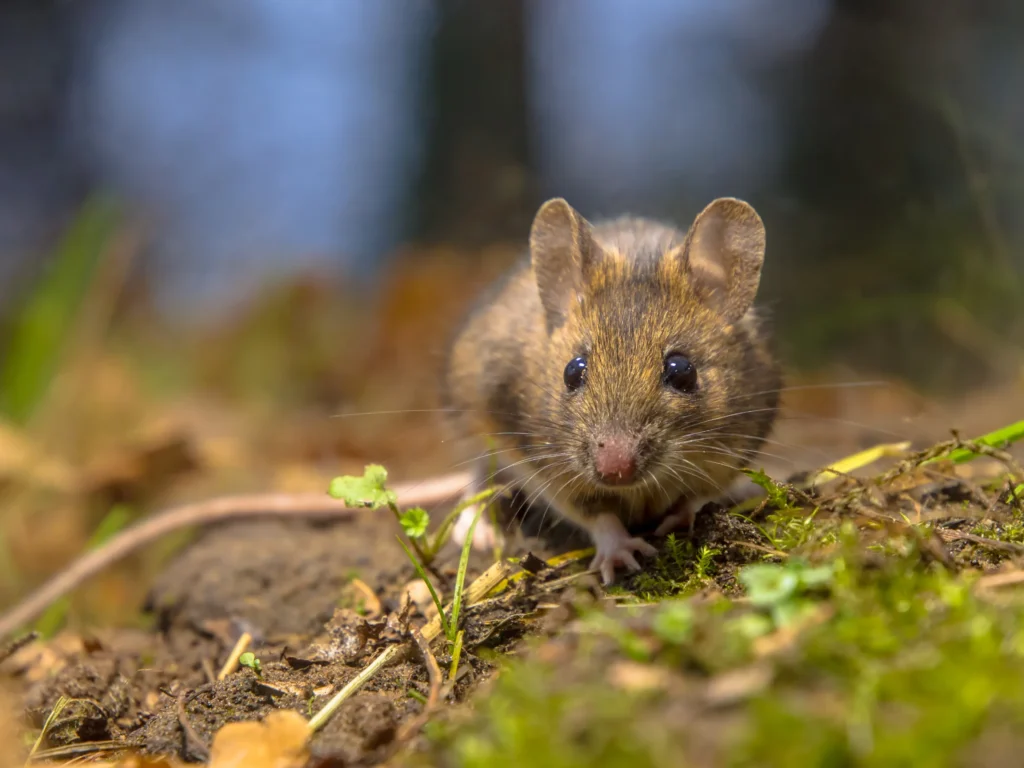
Field Mouse (Apodemus sylvaticus)
Field mice, also known as wood mice, are about 3 to 4 inches long and have a brown coat with a lighter underbelly. They are common in fields and forests but may invade homes, especially during the winter. Field mice are known for their burrowing habits and can cause significant damage to gardens and lawns.
Signs of a Mouse Infestation
Detecting a mouse infestation early is crucial for effective pest control. Here are some common signs to look for:
Physical Evidence of Mice
- Droppings: Mouse droppings are small, dark, and pellet-shaped, typically found near food sources, nesting sites, and along their travel paths.
- Gnaw Marks: Mice constantly gnaw on objects to keep their teeth sharp. Look for gnaw marks on food packaging, furniture, wires, and other materials.
- Nests: Mice build nests from shredded paper, fabric, and other soft materials. Nests are usually hidden in dark, secluded areas such as behind appliances, inside walls, and in attics or basements.
Behavioral Signs of Mice Activity
- Nocturnal Noises: Mice are most active at night. You may hear scratching, scurrying, or squeaking sounds in walls, ceilings, or under floors.
- Tracks and Smudges: Mice leave oily smudges and tracks along walls and baseboards from their frequent travel paths.
- Unusual Pet Behavior: Cats and dogs may become more alert and focused on certain areas of the home where mice are present.
Effective Pest Control Methods for Mice
Managing a mouse infestation requires a combination of DIY solutions and professional pest control services. Here’s how you can tackle the problem:
DIY Mouse Control Solutions
- Sealing Entry Points: Inspect your home for cracks, holes, and gaps in walls, floors, and foundations. Seal these entry points with steel wool, caulk, or other durable materials.
- Traps: Use snap traps, glue traps, or electronic traps to capture and kill mice. Place traps along walls, behind appliances, and in areas where mouse activity is evident.
- Baits: Rodenticides and bait stations can be effective in reducing mouse populations. However, they should be used with caution, especially in homes with pets and children.
- Natural Repellents: Peppermint oil, cloves, and ammonia can deter mice. Soak cotton balls in these substances and place them in areas where mice are likely to enter.
Professional Pest Control for Mice Near Me
While DIY methods can be effective, professional pest control services offer a more comprehensive solution. Experts in pest control for mice have the knowledge and tools to identify and eliminate infestations thoroughly.
How Much Does Pest Control for Mice Cost?
The cost of professional pest control for mice varies based on several factors, including the severity of the infestation, the size of your home, and the methods used. On average, pest control for mice can range from $150 to $500 per treatment. Some pest control companies offer ongoing maintenance plans to prevent future infestations.
Can Pest Control Get Rid of Mice Permanently?
Professional pest control can significantly reduce mouse populations and prevent future infestations. However, long-term success depends on maintaining a clean and sealed environment to prevent new mice from entering.
Professional Pest Control Services for Mice
When DIY methods aren’t enough, professional pest control services can help you eliminate mice effectively. Here’s what you can expect:
How Experts Get Rid of Mice
- Inspection: Pest control professionals conduct a thorough inspection of your home to identify entry points, nesting sites, and food sources.
- Trapping and Baiting: Experts use a combination of traps and baits to capture and kill mice. They strategically place these devices in areas with high mouse activity.
- Exclusion: Sealing entry points is crucial to prevent future infestations. Professionals use durable materials to block gaps and cracks where mice can enter.
- Sanitation: Cleaning and removing potential food sources is essential. Pest control services may provide recommendations for maintaining a mouse-free environment.
What Do Professionals Use to Eliminate Mice?
Professionals use a variety of tools and products, including snap traps, electronic traps, glue traps, and rodenticides. They also employ exclusion techniques and provide advice on preventing future infestations.
Comparing Pest Control Companies for Mice Removal
When choosing a pest control company, consider the following:
- Experience: Look for companies with a proven track record in mouse control.
- Reputation: Check online reviews and ask for references.
- Guarantees: Some companies offer guarantees on their services, ensuring satisfaction and effective results.
- Cost: Obtain multiple quotes to compare pricing and services.
Will Pest Control Get Rid of Mice Completely?
Effective pest control can significantly reduce mouse populations, but complete eradication requires ongoing efforts to maintain a clean and sealed environment. Regular inspections and preventive measures are essential for long-term success.
Preventing Future Mouse Infestations
Preventing future mouse infestations involves a combination of exclusion, sanitation, and maintenance practices.
Mouse-Proofing Your Home
- Seal Entry Points: Regularly inspect and seal cracks, gaps, and holes in your home’s exterior and interior.
- Store Food Properly: Keep food in airtight containers and clean up spills and crumbs promptly.
- Remove Clutter: Minimize clutter in and around your home to reduce potential nesting sites.
- Maintain Landscaping: Trim shrubs and trees away from your home’s exterior to reduce hiding places for mice.
Regular Maintenance and Monitoring
- Inspect Regularly: Conduct regular inspections of your home for signs of mice and take immediate action if evidence is found.
- Use Preventive Measures: Continue using traps and repellents in areas prone to infestations.
- Professional Maintenance Plans: Consider enrolling in a pest control maintenance plan for regular inspections and treatments.
Other common pests in the United States
14 July, 2024

Pest Control for Ants
14 July, 2024
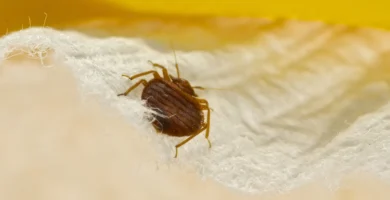
Pest Control for Bed Bugs
16 July, 2024
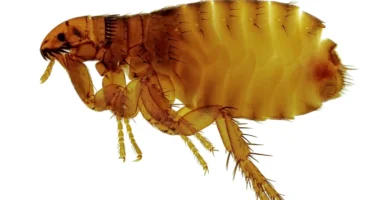
Pest control for fleas
16 July, 2024

Pest Control for Roaches
18 July, 2024
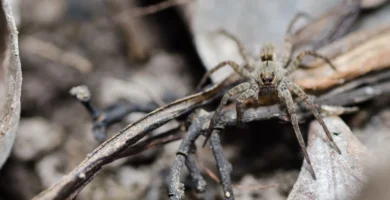
Pest Control for Spiders
16 July, 2024

Pest Control for Termites
17 July, 2024
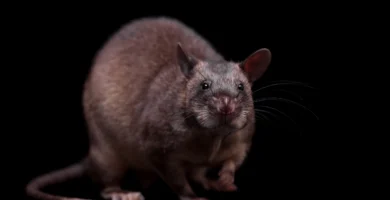
Pest Control for Rats
Frequently Asked Questions About Pest Control for Mice
What is the best pest control method for mice?
The best way to tackle a mouse problem is to combine several strategies: exclusion, traps, and, if needed, professional help. Start by sealing any entry points, like cracks or holes, using materials like steel wool or caulk. Then, set up traps in strategic locations; you can choose from snap traps, glue traps, or live traps. If the situation feels overwhelming, don’t hesitate to reach out to a professional pest control service. They have the expertise and tools to help you reclaim your peace of mind at home.
How will pest control get rid of mice?
Pest control professionals begin with a thorough inspection to identify signs of infestation and potential entry points. They then use a combination of trapping and baiting, placing traps where mice are likely to travel. They also implement exclusion measures to keep mice from returning and provide you with tips on how to maintain a clean environment free of attractants. It’s a team effort to make your home a safer place!
How do I get rid of mice permanently?
To achieve permanent removal, it’s crucial to seal all entry points, as mice can squeeze through surprisingly small gaps. Keep your home clean by storing food in airtight containers and regularly cleaning kitchen areas. Consistently use traps and repellents. If you feel like the problem is getting out of hand, don’t hesitate to call in a professional. They can provide effective, long-lasting solutions tailored to your situation.
What do professionals use to get rid of mice?
Pest control experts have a variety of tools at their disposal, including snap traps, glue traps, and rodenticides. They also use exclusion techniques to seal entry points and offer recommendations on how to keep your home clean and free of attractants. Their goal is to help you regain control of your space safely and effectively.
Can pest control get rid of mice completely?
While pest control can significantly reduce mouse populations, complete eradication requires ongoing effort. Regular inspections, continued exclusion measures, and good cleaning practices are essential to prevent mice from returning. Remember, prevention is key!
How much does pest control for mice cost?
The cost of pest control for mice typically ranges from $150 to $500 per treatment. This price depends on factors like the severity of the infestation and the size of your home. While it may seem like a significant investment, think of it as a way to protect your home and your health.
What is included in professional pest control services for mice?
Professional pest control services generally include an initial inspection to assess the situation, followed by the placement of traps and bait to eliminate mice. They implement exclusion techniques to seal entry points and provide recommendations on maintaining cleanliness. Some services even offer follow-up visits to ensure the problem is fully resolved. It’s a comprehensive approach to your peace of mind!
Are DIY mouse control methods effective?
DIY methods can be effective for small infestations. You can set traps in strategic locations, seal entry points, and maintain cleanliness to eliminate food sources. However, if the situation becomes persistent or complicated, don’t hesitate to seek professional help. They have the experience needed to tackle the problem more effectively.
How do I find pest control for mice near me?
To find pest control services near you, search online for local companies, check customer reviews, and ask your neighbors or friends for recommendations. Make sure the company is licensed and experienced in handling rodent infestations. Your home deserves the best care!
What are the risks of not addressing a mouse infestation promptly?
To find pest control services near you, search the Internet for local companies, check customer reviews and ask neighbours or friends for recommendations. Make sure the company is licensed and experienced in treating rodent infestations. Your home deserves the best care.
If you want to find the best pest control services in your state, visit our homepage.
By understanding the nature of mouse infestations and implementing effective pest control methods, you can protect your home and family from the hazards posed by these persistent pests. Whether you choose DIY solutions or professional services, staying vigilant and proactive is key to maintaining a mouse-free environment.
For more information on pest control for other household pests, consult reputable sources such as the Centers for Disease Control and Prevention (CDC) and local pest control professionals.
